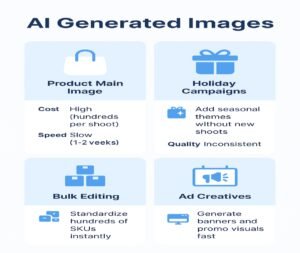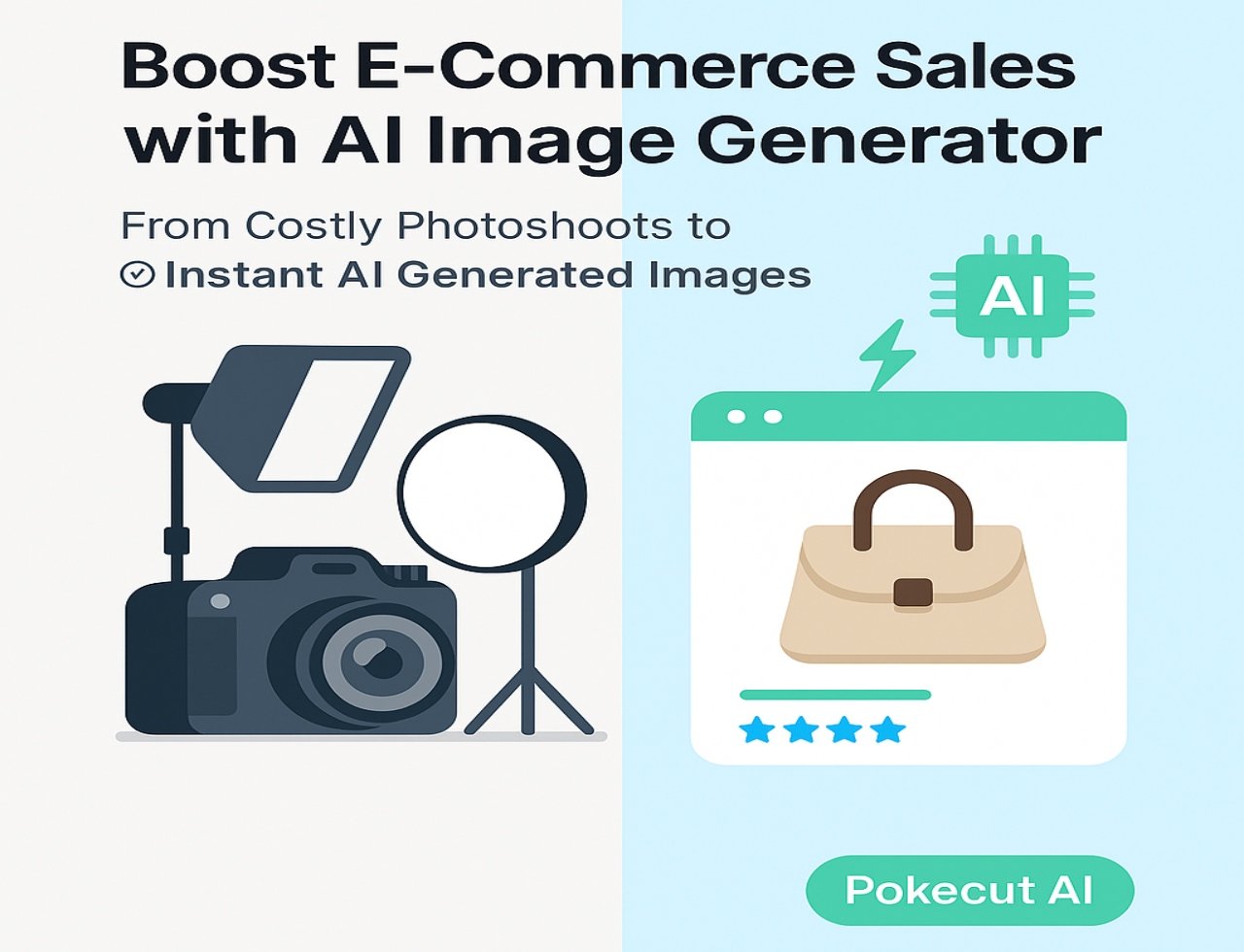Introduction: When Great Products Don’t Sell
Every online seller has faced this frustration: you know your product is solid, you’ve priced it fairly, but the clicks just aren’t coming in. You tweak the title, rewrite the description, and even adjust the price—but nothing moves.
The real problem often isn’t the product itself. It’s the photos. Shoppers scroll through pages at lightning speed, and your images are the only thing that can make them stop. A photo is the first handshake between your store and a potential customer. If it doesn’t grab attention, the sale is gone before it begins.
The catch? Creating good product photos is harder than it looks. Hiring a photographer is expensive and slow. Shooting and editing yourself often ends with poor lighting, cluttered backgrounds, or results that just don’t look professional. And every time you launch new SKUs or run a seasonal campaign, you need more photos all over again.
That’s why more sellers are experimenting with new solutions. Instead of waiting days or weeks, they want ways to produce usable images instantly—without breaking the bank.
Why Photos Make or Break E-Commerce Sales
On platforms like Amazon, Etsy, or Shopify, buyers can’t touch or test your product. They only have your photos. In a crowded search result, a buyer might see dozens of near-identical products. Which one do they click? Nine times out of ten, it’s the listing with the cleanest and most professional-looking images.
Photos do more than attract clicks—they shape trust and conversion:
- Blurry images make shoppers doubt quality.
- Cluttered or inconsistent backgrounds look unprofessional.
- No lifestyle photos leaves buyers unable to picture the product in their own lives.
Surveys consistently show the same thing: product images are one of the most important factors in online buying decisions. Better visuals aren’t just decoration—they’re a real competitive advantage.
How an AI Image Generator Changes the Way Sellers Handle Photos
Traditionally, sellers only had two options:
- Hire professionals – reliable quality but costly and time-consuming.
- DIY photos – cheaper, but limited by equipment and editing skills.
Both routes come with pain points: too expensive, too slow, or too amateurish.
Now, there’s a third path: using an AI Image Generator. With a single tool, you can:
- Create compliant white-background main images instantly.
- Add seasonal themes (Christmas, Valentine’s, Halloween) without reshooting.
- Process dozens—or hundreds—of images in bulk with consistent style.
This approach doesn’t just cut costs—it gives small and mid-sized sellers the ability to create images that look every bit as professional as those from large brands.
Practical Use Cases of AI Generated Images
AI Generated Images aren’t just for show—they solve real, everyday problems that sellers face:
- Main product photos: Platforms like Amazon require white backgrounds. A Background Remover feature gives you clean, compliant photos in one click.
- Holiday promotions: Instead of staging expensive shoots, you can instantly place your products in Christmas, Halloween, or Valentine’s backgrounds.
- Detail corrections: Tools like AI Product Retouch and AI Photo Enhancer can brighten, sharpen, and fix flaws automatically.
- Bulk listing updates: Standardize dozens—or even hundreds—of images in one go, saving hours of manual editing.
- Ad and banner designs: Generate professional ad creatives quickly, even if you don’t have a design team.
The best part is that you don’t need advanced design skills to make this work. With curated collections of AI Generated Images already available, sellers can explore, adapt, and apply visuals that fit their products and audiences—without starting from scratch.

Common Challenges Sellers Face (and How AI Fixes Them)
Even with clear benefits, many sellers hesitate. Here are a few common doubts—and how AI tools address them:
- “AI images look fake.”
Early AI outputs often had odd details, but modern tools are trained for commercial use. For e-commerce, the focus is on clean, realistic product visuals that meet platform standards. - “I don’t have time to learn another tool.”
The best AI platforms are built to be intuitive—upload, select, download. No steep learning curve, no Photoshop-style complexity. - “My products are unique—can AI handle them?”
Whether you’re selling handmade crafts on Etsy or electronics on Amazon, AI adapts to different categories. You can customize prompts or fine-tune backgrounds to match your niche. - “Consistency matters—will AI keep my store’s look aligned?”
Yes. With bulk editing and style templates, you can apply the same look across hundreds of SKUs, making your catalog feel unified and professional.
By addressing these doubts upfront, AI stops being a “shiny gadget” and becomes a practical tool sellers can trust.
Why Ease of Use Matters (and How Pokecut Delivers)
One hesitation many sellers have is: “AI sounds powerful, but do I need tech skills to use it?” The answer is no. Pokecut makes the process as simple as three steps:
- Upload a product photo or enter a short prompt.
- Choose the effect—remove background, change setting, or enhance clarity.
- Download and use it immediately.
For sellers, the benefit isn’t just speed—it’s control. No more waiting for photographers or back-and-forth with editors. You decide what you want and get it instantly.
It also supports bulk processing and works across devices. That means you can edit hundreds of images in one go, whether you’re at your desk or managing inventory from your phone.
How AI Tools Boost Conversions in Practice
Convenience is nice, but does it translate into sales? In practice, yes.
- Faster product launches: Instead of waiting weeks for photos, you can generate images in a day and get listings live ahead of competitors.
- Lower costs: A professional shoot can cost hundreds of dollars. With AI, the marginal cost is nearly zero, letting you test more variations.
- Better ad testing: Run two ads—one with plain shots, another with lifestyle-style images. If lifestyle ads deliver a higher CTR, you can adjust budget immediately.
- Stronger brand trust: Polished, consistent visuals make even small sellers look credible.

Getting Started with AI (and Where to Try It)
If you’ve ever delayed a product launch because the photos weren’t ready, or spent hours fixing messy images, now’s the time to try AI for yourself. Generate a few variations, see which style resonates, and put them to work in your store.
The beauty of AI isn’t that it replaces creativity—it’s that it handles the repetitive work, so you can focus on selling.
Conclusion
In e-commerce, photos aren’t decoration. They’re your silent salespeople. With AI tools, sellers finally have a way to create visuals that win clicks, build trust, and drive conversions—without draining budgets or wasting time.
Great products deserve great photos. Now, every seller has the tools to make that happen.

